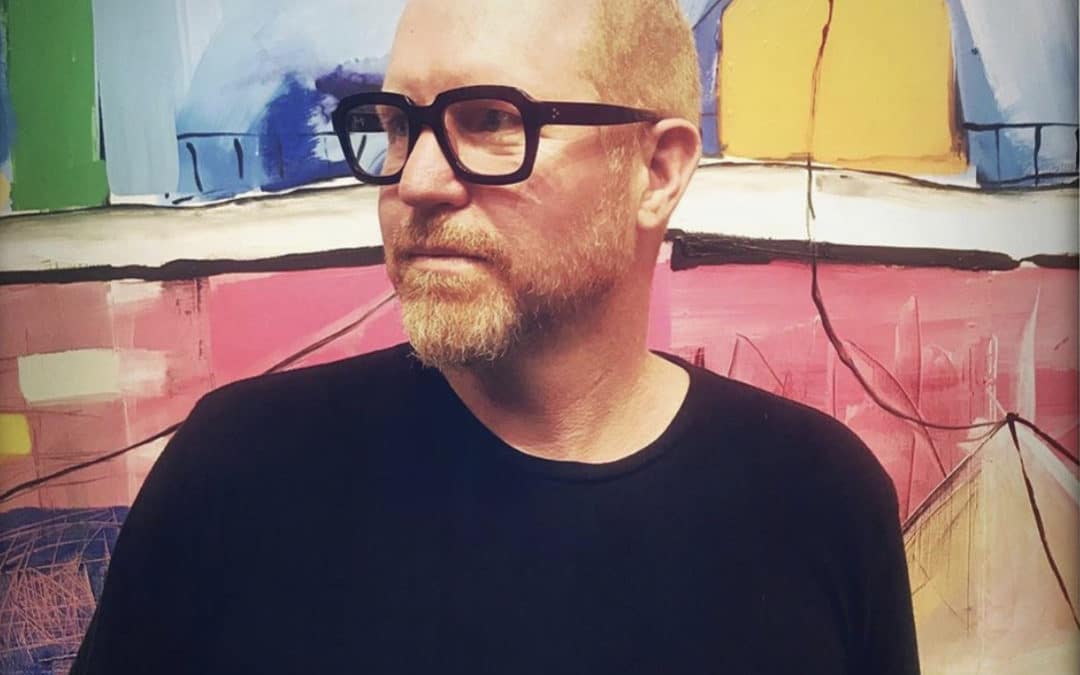1act.1idea. Open Call for Plays and Performers and more – https://tedxasbury.com
Brian Smiga talks to Jim Watt about his 100 Watt series and the “Asbury Paradox”
Brian Smiga: This is Brian Smiga with TEDxAsburyPark Interview of Jim Watt, entrepreneur, producer, fine artist, restaurateur, and a good friend of mine who also happens to be a cyclist like me. Welcome, Jim.
Jim Watt: Thanks, Brian. Thanks for having me.
Brian Smiga: Yeah, it’s great to see you in your new studio.
Jim Watt: Yeah.
Brian Smiga: Congrats on that.
Jim Watt: Thank you.
Brian Smiga: Today we’re going to talk about a phrase we call the “Asbury Paradox”, but really we’re talking about art reflecting our current climate, our local and global climate of ambiguity and paradox and how that plays out…how that plays out for you, Jim, as an artist and as an architect. So, how did you first originate this idea of architecture and art reflecting the current ideas and challenges in the culture?
Jim Watt: Well, I think it’s not talked about enough that art and architecture and music and all of the arts are such an important agent of culture. And they are, in my opinion, they are a language. And through metaphor, they are participating in culture in a very active way. So as an artist, as an architect, I think that you have a responsibility, because whether you know it or not, you’re contributing to something bigger. A bigger set of ideas, a bigger set of ideals. And if you look at the world that we’re in right now, we’re in an intensely polarized space, place, planet.
Brian Smiga: Yeah.
Jim Watt: So, as somebody, as an artist, what position are you going to take relative to that? I think that things like ambiguity, nuance and uncertainty are a wonderful antidote to some of this divisive, polarized, dualistic place that we live in.
Brian Smiga: I couldn’t agree more. I think at the root of authoritarianism is uncertainty, actually, and people escaping from uncertainty. In fact, Erich Fromm, the social psychologist, wrote a book that’s influenced my whole life, The Escape from Freedom. It’s really about how folks sometimes can’t handle their ability to individuate and make their own choices. And I think we live in a time where there’s a lot of stress. So architecture and giving us an experience of buildings and places, how can it assist? How can it reflect?
Jim Watt: Well, let’s just talk about what I think is the simplest and most identifiable example, is the design of a home, right?
Brian Smiga: Right.
Jim Watt: Over the years, how has the design of homes reflected our ideals and ideas about the family? For example, Levittown Long Island development, post-war, what was that saying about our society’s ideals about the nuclear family? How did that house act as a machine or a metaphor for creating that reality? Which it gave it form, right? Institutional buildings give form to these ideas or ideals. And I think that we need to recognize that’s happening and ultimately take a position as to what ideals do we want to give form to? Do we want to promote hierarchy and separation? Or is there a different way of doing it and what is that expression?
Brian Smiga: So it’s interesting because in art and architecture, we have objects which have a primary function to be perceived, to behold, to pay attention to, to be seen, to be experienced. And then in the selection artists and architects make, we choose what rises to the foreground and what do we pay attention to.
Jim Watt: Mm-hmm
Brian Smiga: That’s interesting. So how does this play out in your current life as an architect, watercolorist and fine artist?

Jim Watt watercolor (56)
Jim Watt: Well, I think that like with any language, the composition of the elements says something, makes a statement, right? So you talked about foreground, the relationship between a figure and ground, for example, in painting, right? You can do that in a very hierarchical way, where the figure is very dominant and predominant, and the background is subservient to the figure. Or you can play with that relationship, solid and void, harmonic and dissonant, abstract or representational, right? You can play with the tension between those two things, as opposed to putting them in their, quote unquote, right place.
And I think that that’s something I’m interested in doing in large scale oil paintings, in watercolors, in ink washes, ultimately in sculpture. And I think it’s about treating the relationships that exist in the language and music, its notes, in painting, its value and color and figure and form. And exploring the tension between them, the nuance, the ambiguity between them, as opposed to, again, putting them in their proper place.
Brian Smiga: So I have to tell a story on you and ask you a question. The last time I saw you, I was in your last studio and it was filled with almost 100 watercolors.
Jim Watt: Mm-hmm
Brian Smiga: You came up with this really interesting medium and you went for it, and possibly in an obsessive, rhythmic, beautiful way. And it was great to see those works as a collection. I want you to talk about that, but then the follow on question is, what will your new studio be filled with the next time I come see you?

Jim Watt watercolor (99)
Jim Watt: Okay. Well, the watercolor series was called 100 Watts. It’s just like a play on my name and the GE light bulb. But the idea came to me, I was exploring watercolors as studies for bigger oil paintings that I was working on. And then they became things in and of themselves. It was at the beginning of the pandemic, there was… I forget how many days left in spring. So I wanted to do a series. I’ve also become more and more interested in series, works in a series. There’s a real richness to that for me.
So I did 100 of them, the last one was completed on the last day of spring. For me, the watercolors, there was a lightness, there was a vibrance to the colors themselves. And to me, it was hopefully a gesture of hope for bringing us out of the spring, into the summer and hopefully closer and closer to the end of the pandemic. And the idea of displaying them all on a single wall too, that wall became a piece. So there’s this nice tension between the individuality of the pieces themselves and them contributing to something much bigger.
Brian Smiga: So we’ll share with our audience a photo of that wall. It was stellar when I saw it. And it’s interesting to me too that you set this goal during the early months of the lockdown to do a 100 Watts, 100 paintings by the last day of spring, and you did it.
Jim Watt: Yeah.
Brian Smiga: Was it an obsession or was it well paced?
Jim Watt: I don’t think it was an obsession at all. It was something I really enjoyed doing. It was somewhat therapeutic in some ways, because there was a rhythm to it. I knew I had to do a certain number every day to complete it and I had so much fun doing it. I was actually quite sad when it was over. And I documented the process. And it provided me with what I was hoping the works would provide to the viewer, which was hope and optimism and something other than what we were consumed with through the media. And some really scary stuff, which we’re still in the middle of right now.
Brian Smiga: Yeah. And without giving up any of your energy about it, do you have a direction you’re going to take in your new studio to create some multimedia art?

Jim Watt watercolor (45)
Jim Watt: So after the 100 Watt series, I went back to large format oil painting, which I was doing before that. And right now, the first pieces that I created in the new studio, and I’ve only been here for a couple of weeks, is a series of black and white ink washes, which are very reminiscent of the watercolors, but devoid of any color. And I really wanted to just explore value, and those ink washes are really interesting. They’re very, very abstracted landscapes, as were the watercolors. And I was thinking about the idea of doing 1,000 Watts.
Brian Smiga: In the wash, right? In the wash medium.
Jim Watt: n the wash, yeah. They happen very quickly.
Brian Smiga: Yeah.
Jim Watt: So the idea of doing 10 a day for the next 100 days is really not… It sounds obsessive, but I think it’s really doable. Whether or not I decide it’s that interesting, I don’t know. I haven’t figured that out. I don’t want it to become a novelty, the idea of just doing a lot.
Brian Smiga: Well, we’ll come back. And let’s just say I’m lighting up with the idea of 1,000 Watts and you producing 10 a day. So we’ll come back and find out in a couple of months.
Jim Watt: Yeah, yeah, yeah.
Brian Smiga: But in the meantime, you are also a play producer and a jazz concert series producer. Tell us about how the audience can engage with you in Asbury Park or on Zoom. Because I think getting to know you today, hopefully our audience will want to engage with some of the things you’re producing. I know I will.
Jim Watt: Yeah. So my gallerist, or my art dealer, his name is Jim Kempner and his gallery is in Chelsea. Jim Kempner Fine Art. He’s also a very talented actor, and I had seen him play Mark Rothko in the play, Red, several years ago. And he and I decided to do that again. And I was the producer and it’s a wonderful two person play about Mark Rothko and his assistant. And had so much fun doing it that we did it actually twice in two different locations in 2019. And right now he and I are working on a production of the play, Art. And we will be bringing that to Zoom probably in March. So, Brian, if you could help me spread the word about that when the time is right, that would be fantastic.
I love doing it. I love the energy. I love seeing the direction happening and the creativity that happens with a script. I didn’t realize that. I’ve always loved theater, but I’m not somebody who was in that world, so to see it happen, to see a play come together, to see the director working with the actors to really sculpt that clay and create the characters. And actually, I just didn’t understand how creative that process could be. It wasn’t just about the acting of the script, it was about the interpretation of the script, like a great conductor of a classic piece of music. So I love doing that. I love producing the Jazz at the Shop series this summer, which was every other Saturday.
Brian Smiga: Will that be back, do you think, next year?
Jim Watt: Yeah. Yeah. “Jazz at the Shop” is a branded series that I would like to always be doing something with.
Brian Smiga: Great.
Jim Watt: This is the first time, it was because of the pandemic. We had world-class jazz musicians, my friend Antoine Drye, the trumpet player, was the artistic director of that. And I will be doing more of that. But I love producing. To me, it’s like painting. It’s like designing a building. You’re taking nothing and making something. And that something is really saying… Has a specific point of view, which I really love.
Brian Smiga: So there we go. We’re going to send our audience to you for your Zoom play coming up in March or April. It’s a production of Art, featuring Jim as producer and Kempner as one of the actors in the play. And there’ll be the “Jazz at the Shop” series next summer for you guys to all learn about. In the meantime, Jim’s going to be participating with TEDxAsburyPark in our events, as well his brother and his restaurant group, the Smith Group. And so we look forward to more collaboration with you and Jason Watt, Jim.
And this has been Brian Smiga with Jim Watt for TEDxAsburyPark. Our next event is April 1st, Treat Others as You Wish to be Treated. It’ll be a series of 30 readings, slideshows, experiences on The Golden Rule, and we’ll see you all then. Thanks, Jim.

